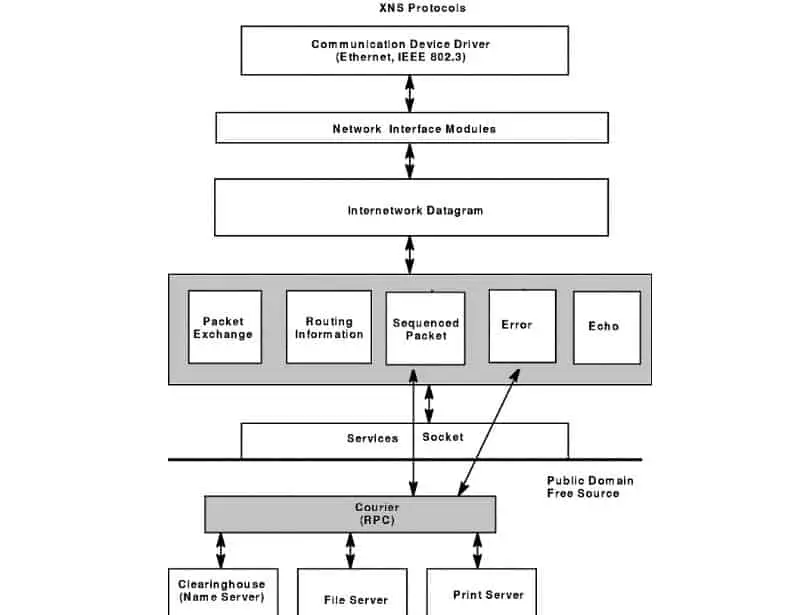XNS (stands for Xerox Network Systems) is a suite of networking protocols developed by Xerox Corporation’s Palo Alto Research Center (PARC) in the early 1980s.
What is XNS (Xerox Network Systems)?
Xerox Network Systems is a suite of networking protocols developed by Xerox Corporation’s Palo Alto Research Center (PARC) in the early 1980s. Xerox Network Systems (XNS) is little used today, but it was important in the evolution of other networking protocols, such as IPX/SPX and TCP/IP.

How XNS Works
XNS is based on a five-layer model, in contrast to the seven-layer Open Systems Interconnection (OSI) reference model for networking. The layers of the XNS protocol stack are as follows:
- Level 0 (media access layer): Maps to the OSI physical layer and data-link layer and performs similar functions. XNS does not tie into any one media access protocol and supports the Ethernet, Token Ring, High-level Data Link Control (HDLC), and X.25 protocols, among others.
- Level 1 (network layer): Maps to the OSI network layer and defines the Internet Datagram Protocol (IDP). IDP functions similarly to the Internet Protocol (IP) of TCP/IP and uses a logical addressing scheme that requires four-byte network numbers, four-byte host numbers, and two-byte socket numbers for both source and destination addresses. IDP is responsible for delivering datagrams by using unicast, multicast, and broadcast methods. Level 1 also defines the Routing Information Protocol (RIP), which handles dynamic routing and has evolved into later versions for use in IPX/SPX and TCP/IP networks.
- Level 2 (transport layer): Maps to the OSI transport layer and defines the Sequenced Packet Protocol (SPP). SPP functions similarly to the Transmission Control Protocol (TCP) of TCP/IP and is responsible for providing reliable transmission of IDP packets, including sequence numbers and acknowledgments. Level 2 also defines the Packet Exchange Protocol (PEP), which functions similarly to the User Datagram Protocol (UDP) of TCP/IP. For troubleshooting purposes, the Echo Protocol (EP) functions similarly to the ping utility of TCP/IP.
- Level 3: Maps to the OSI presentation layer and includes the Filing Protocol (FP), Clearinghouse Protocol (CP), Printing Protocol (PP), and others.
- Level 4: Maps to the OSI application layer.
Note:
XNS has no level that maps to the OSI session layer.